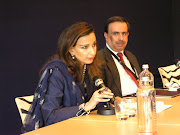If there is one region that promises to become vital to India's national interests in the years to come, it is South East Asia. Historically, South East Asia has been part of India's civilizational frontiers. Even today, there are several versions of the Indian epic Ramayana that are performed in various countries of the region.
But during the Cold War years, most of the prosperous countries from the South East that had formed the Association of South-East Asian Nations (ASEAN) were closely aligned to the United States, while India had a special relationship with the Soviet Union. Hence, India and the ASEAN countries drifted apart.
With the end of the Cold War, however, there has been some effort by New Delhi to look afresh at the region. The 'Look East' policy was part of this new vision. ASEAN made India its Sectoral Dialogue Partner in 1992 and its Full Dialogue Partner in 1996. Subsequently, India was invited to join the ASEAN Regional Forum (ARF), the "ASEAN-driven multilateral, security dialogue platform." With the inclusion of Myanmar, India and ASEAN are more than just maritime neighbors, they also share an over 1,600 kms. land boundary.
This engagement with ASEAN is part of a clear recognition -- on part of India's elite -- of the strategic and economic importance of the region to India's national interests. However, there remains a disjunction between thought and practice and New Delhi's engagement has still not acquired the thrust, or indeed the institutional requirements, to be able to pursue its interests in the region in a systematic and purposeful manner. India's efforts to engage ASEAN must become more determined in the years to come.
Instead of a single image of ASEAN that prevails in India, there is plurality of inter-connected images through which the Indian elite has constructed ASEAN. Four images are the most popular: as a pivot in India's 'grand strategy'; as a zone of economic opportunity; as a role model; and as a region of cultural and civilizational confluence. It is the first two images, however, which are of vital importance.
ASEAN is slowly emerging as central pivot in the Indian view of Asia and its future, and essential to the construction of a security order that will be in India's interests. This is not only because the view of the Asia-Pacific as a zone of increased threats, potential turbulence and unbridled great power rivalries, is gaining increasing currency in India, but also because ASEAN potentially shares a range of common military and non-military threats and concerns, including those related to issues as diverse as energy, economics and sustainable development.
Quite obviously, deeply concerned about the uncertainties of the future, including but not only over China's role, India is beginning to recognize the limits to which New Delhi can unilaterally "contain" a potentially belligerent Beijing and other security challenges. It would like to fashion a multilateral security order in the Asia Pacific in partnership with ASEAN.
In other words, India is not just deeply concerned about potential instability in Asia, but also willing to adopt a more active role in the future.
Foreign Minister Jaswant Singh's speech in Singapore in June this year is particularly revealing and illustrative. Jaswant Singh went on to specifically focus on Indian and Indian-ASEAN security concerns. He said: "India's parameters of security concerns clearly extend beyond confines of the convenient albeit questionable geographical definition of South Asia. South Asia was always a dubious framework for situating the Indian security paradigm. Given its size, geographical location, trade links and the Exclusive Economic Zone, India's security environment and therefore potential concerns range from the Persian Gulf to the Straits of Malacca in the West, South & East, Central Asia in the North-West, China in the North-East and South East Asia."
India's involvement in ARF, its increasing defense co-operation with individual ASEAN countries (including Vietnam, Malaysia, Indonesia and Thailand), and particularly the co-operation between the coast guards and the navy will grow, but it is the larger element of a comprehensive strategic dialogue and a broader strategic understanding that may fashion itself in the future.
The image of ASEAN as a zone of economic opportunity is also still a strong one, despite the ups and downs in the economic relationship since 1991, the financial crisis that affected most of the ASEAN countries and India's own sluggish pace of economic reform.
India is cooperating with ASEAN countries in various fields including trade and investment, science and technology, tourism, human resources and infrastructure development. Such linkages are expected to intensify in the coming years. According to sources, "through the institution of dialogue partnership, attempts are being made to identify areas for focused interaction, including formulation of work programs and action plans."
In sum, India's engagement with ASEAN will grow steadily. While there is an obvious and growing potential within the economic arena, New Delhi will seek to cultivate the ASEAN countries, politically and strategically, more than ever before. India's presence and contribution in the ARF and Track II forums will be more regular and deeper than before.
Concern about China obviously provides an impetus, but engagement with ASEAN will be driven by larger considerations about stability in Asia and the belief that ASEAN and India share a range of common military and non-military threats, as well as largely similar perceptions of order in the region.
Bureaucratic inertia and the conservative mandarins of India's Ministry of External Affairs may not always show the energy and enthusiasm needed, but ultimately the obvious convergence of ideas and interests will ensure that India-and ASEAN will relate closely to each other in the future
(Source: indiainfo.com)







No comments:
Post a Comment